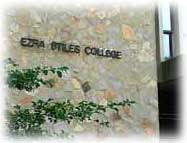 |
Who Yale HonorsBerkeley
College |
Ezra Stiles College In his biography of Stiles, Edmund Morgan tells us:
Newport worked through maturity as Ezra Stiles' slave until he was around 30 years old. At the same time that Stiles penned a joint letter with Hopkins condemning "the great inhumanity and cruelty" of slavery, and while Stiles himself wrote and preached against the slave trade, Stiles himself owned a slave whom he had obtained directly through trade and held for 20 years. In 1778, the Yale Corporation selected the Rev. Ezra Stiles to be the next President of Yale. The move, and the new job, prompted many changes for Stiles, including Newport's liberation. On June 9, 1778, Stiles wrote in his diary, "I freed or liberated my Negro Man Newport, about aged 30. Settled all my Affairs, & myself & seven children set out in two Carriages for New Haven" (37). After eleven years in Africa and twenty as the slave of a Rhode Island preacher, Newport set out to make his living as a free man in colonial Rhode Island. It must have been difficult for a free black man to make ends meet in Rhode Island. In December 1782, Newport arrived in New Haven. He asked Ezra Stiles for a job, and Stiles obliged, hiring him on the following terms:
It appears that Stiles hired his former slave Newport as a servant on the condition that Newport's two year old son, Jacob, would be bonded to and would serve Stiles until age 24 (39). Jacob joined another Native American child, Aaron, who served as Ezra Stiles' indentured servant (40). Newport himself remained Stiles' paid servant until Stiles' death in 1795. Indentures such as this were common around the time of gradual emancipation. Ira Berlin explains:
In 1790, Stiles agreed to serve as the first President of "The Connecticut Society for the Promotion of Freedom and for the relief of persons unlawfully holden in Bondage."
|
|
 In
the year 1776, the Declaration of Independence was signed, and
In
the year 1776, the Declaration of Independence was signed, and